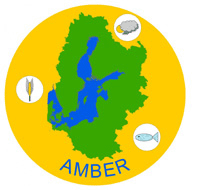WP A-Cluster: Time series analysis
The WPs A.1–A.6 deal with time series analysis of all abiotic and biotic monitoring time series from open Baltic Sea, coastal stations and the Archipelago Sea. Special foci will be the interaction between North Sea and Baltic Sea, high-salinity low-precipitation vs. low-salinity high-precipitation years, changes in retention time, sedimentation, nutrient transport, reproduction and growth parameter, fish recruitment, etc. Data sets will be used which allow retrospective analyses and the investigation of potential predictability. With this new knowledge, future predictions can be calculated using existing climate change scenarios. From the historical analyses and the future perceptions, EcoQOs and indicator indices will be derived for the use of fisheries management, the development of an early warning system and the cost-effective improvement of monitoring.
| WP | Title and Aim | Resonsible PI |
Partners |
| A.1 |
Updated Data Collection Data sets collected in a previous EU projects need an update and a time extension |
Ilppo Vuorinen (ARI) |
ARI, IHF, IOW |
| A.2 |
Retrospective Data Analysis Identification of climate signals in all historical ecological time series |
Ilppo Vuorinen (ARI) |
ARI, IOW, IHF |
| A.3 |
Analysis of potential predictability Identification which part of the Baltic Ecosystem is controlled by climate change and |
Joachim Dippner (IOW) |
IOW, ARI, IHF |
| A.4 |
Prediction of future changes Using different climate change scenarios available at SMHI, the development of Baltic ecosystem will be predicted up to 2100 using the method of Dippner & Kröncke (2003). |
Markus Meier (SMHI) |
SMHI, IOW, IHF, ARI |
| A.5 |
Analysis of future development of Baltic Ecosystem Identification which part of the Baltic Ecosystem will change in which direction. |
Joachim Dippner (IOW) |
IOW, IHF, SMHI, ARI |
| A.6 |
Analysis of optimal environmental window Analysis of Baltic Sea ecosystem using optimal environmental window technique. |
Joachim Dippner (IOW) |
IOW, IHF, SMHI, ARI |

